Roadside Edge Computing Research: how edge computing enables intelligent connected vehicles?
Policies and standards for roadside edge computing are implementing one after another, favoring the boom of the industry.
In April 2020, the National Development and Reform Commission defined the scope of "new infrastructures" for the first time, which includes new infrastructures such as cloud computing and intelligent computing centers; in February 2021, the Ministry of Transport of China issued the "National Comprehensive Three-dimensional Transportation Network Planning Outline", suggesting promoting the digitization and connection of transportation infrastructures, deploying traffic perception systems in an all-round way, and facilitating the application of autonomous driving and vehicle-infrastructure cooperation.
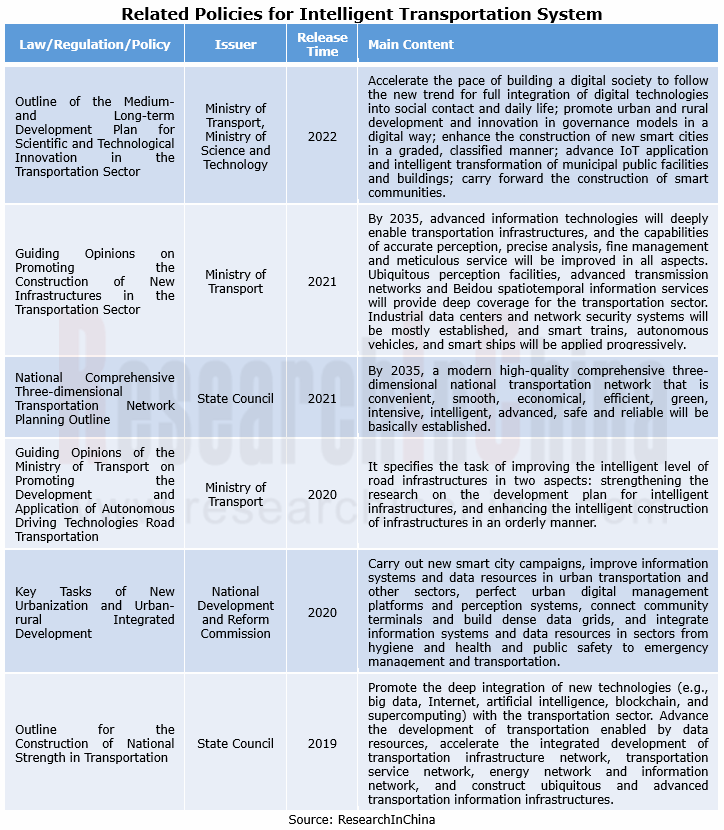
These policies facilitate the steady development of intelligent transportation industry, and help it transition from the information phase to the connection phase, and finally to the intelligent road phase. The powerful roadside perception, edge computing, network communication, and cloud control technologies provide support for efficient fully automated driving.
In addition to benign policies, the standards concerning roadside edge computing get improved:
 In December 2021, the exposure draft of the group standard "Edge Computing Gateway Communication Interface Standard of Intelligent Road" was released. It specifies the communication interface requirements for the southbound heterogeneous device access and the northbound unified access platform of the intelligent road edge computing gateway.
In December 2021, the exposure draft of the group standard "Edge Computing Gateway Communication Interface Standard of Intelligent Road" was released. It specifies the communication interface requirements for the southbound heterogeneous device access and the northbound unified access platform of the intelligent road edge computing gateway.
 In March 2022, the group standard "General Specification for Traffic Information Holographic Acquisition System of Road Intersection" jointly prepared by Huawei, Beijing MapABC Technology, Beijing Chinasoft Zhengtong Information Technology, Shenzhen Traffic Police Bureau, and Changzhou Traffic Police Division took into effect. This standard indicates that edge computing units should be uniformly deployed at intersections; the videos, images and structured data collected in all directions should be managed and calculated to offer the fusion information of intersections which will be uploaded to the business application platform.
In March 2022, the group standard "General Specification for Traffic Information Holographic Acquisition System of Road Intersection" jointly prepared by Huawei, Beijing MapABC Technology, Beijing Chinasoft Zhengtong Information Technology, Shenzhen Traffic Police Bureau, and Changzhou Traffic Police Division took into effect. This standard indicates that edge computing units should be uniformly deployed at intersections; the videos, images and structured data collected in all directions should be managed and calculated to offer the fusion information of intersections which will be uploaded to the business application platform.
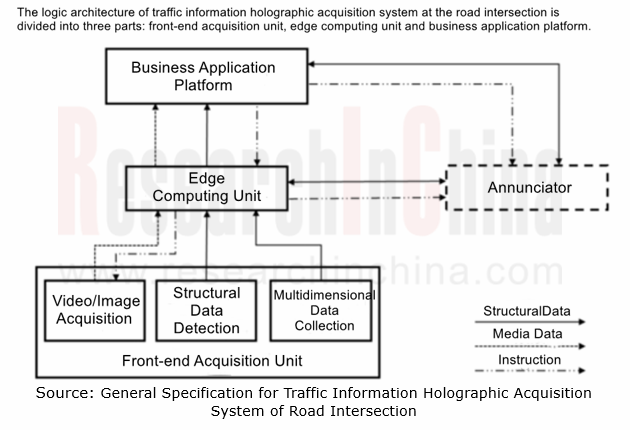
Based on the construction of standardized edge cloud, the standardized cooperation between the urban center cloud and the edge cloud will make a further improvement in the future, in a bid to realize the intercommunication and interconnection between edge cloud devices, and facilitate the unified management on large scale and the application of "terminal-edge-cloud" cooperation.
In the new technology architecture for intelligent roads, "edge computing" is being applied to more scenarios.
Intelligent transportation is transforming from informatization to intelligent connection. The construction of intelligent roads serves as an important part in intelligent transportation. At present, in China more than 20 provinces have completed the renovation and construction of over 40 intelligent highways, and "cloud-network-edge-terminal" is becoming a new-generation technology architecture for intelligent roads. In this new technology architecture, the "edge" is playing a more prominent role and making its way into more application scenarios.
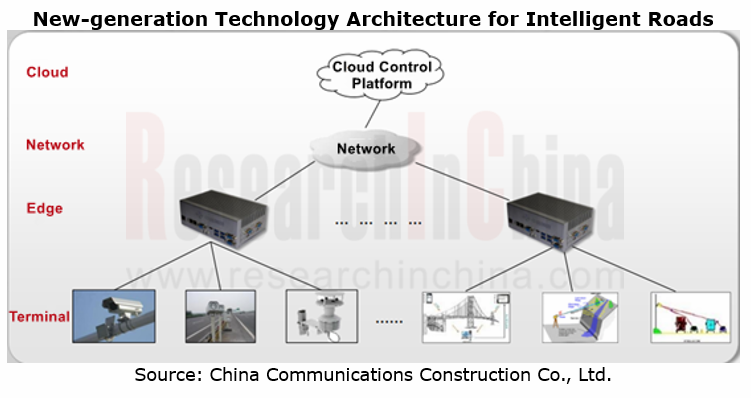
Edge devices with certain computing power can ease the pressure of cloud computing at the roadside. In addition, edge computing can cut the transmission time of data in the network, simplify the network structure, and also enables precise perception of traffic conditions. Edge computing thus has a decided advantage in construction of intelligent roads, especially in the telematics environment.
(1) Application of edge computing in vehicle-infrastructure cooperation
Through the lens of the three delivery modes of edge computing, 5G multi-access edge computing (MEC) best fits the intelligent transportation sector. As MEC is introduced into vehicle-infrastructure cooperation, edge computing devices allows direct, real-time reception of localized data from in-vehicle terminals and roadside sensors, analyze the data, and transmit the analysis results to other connected vehicles in the adjacent area with an ultralow latency. The whole process can be completed in milliseconds.
The new-generation vehicle-infrastructure cooperation technology architecture enables fusion application of MEC, C-V2X, 5G and more, delivering far stronger end-to-end communication capabilities. This architecture is also a solution to the problem of high construction complexity and costs posed by wired backhaul of the roadside data. Moreover, when the penetration rate of V2X equipment is not high enough, it provides N2V services for ordinary vehicles without OBU installed via the 4G/5G network, revving up the application and promotion of vehicle-infrastructure cooperation.
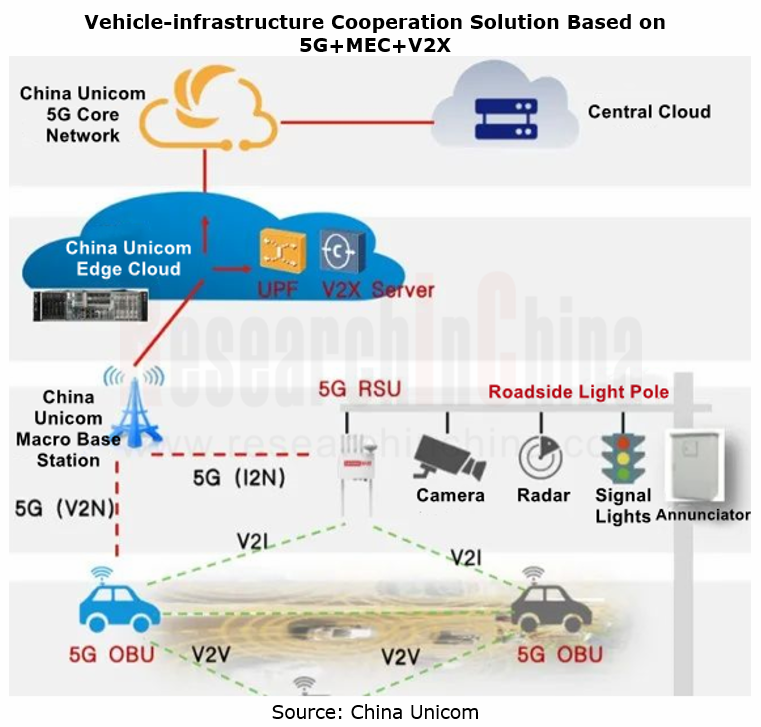
(2) Application of edge computing in HD map
The use of HD maps helps to achieve the application of L4/L5 autonomous driving, but still faces some challenges such as real-time dynamic updates. The introduction of MEC is a better way to solve these problems.
The MEC carrying HD maps enables rapid distribution of dynamic maps. Combined with 5G network slicing technology, it allows a vehicle to acquire HD map data in real time and save much storage space of the head unit.
(3) Application of edge computing in smart park
The introduction of edge computing into a smart park not only enables perception, monitoring, analysis, control, and integration of the resources at all key links of the park, but also realizes vehicle-infrastructure cooperation there.
Shougang Winter Olympics Park has built a 5G+C-V2X based cooperative vehicle-infrastructure system (CVIS) that enables global traffic situational awareness. The facility deploys sensing devices like cameras and radars, and connects intelligent devices such as signal lights on both sides of the trunk road and key intersections in the park, in a bid to achieve global traffic information collection. It also deploys perception-based multi-source heterogeneous fusion perception algorithms inside the roadside MEC, develops and optimizes algorithms for Winter Olympics scenarios, which enable traffic video detection and tracking in weather conditions, e.g., heavy snow and fog.
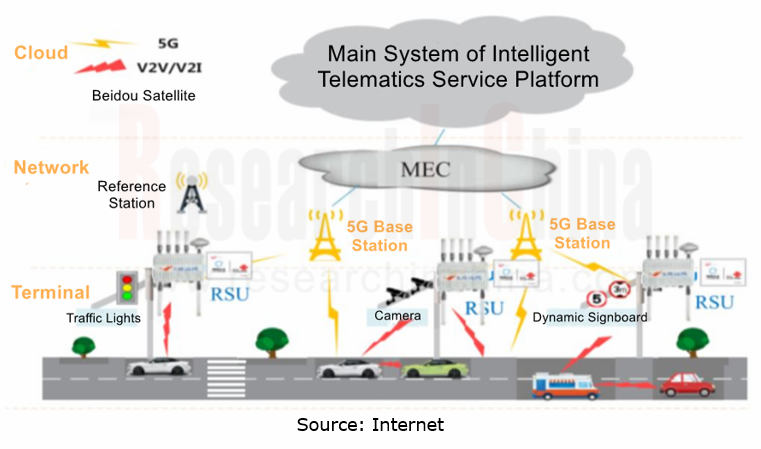
(4) Application of edge computing in highway scenario
At the highway entrance ramp, traffic accidents are prone to happen when vehicles merge. Intelligent perception devices deployed at the ramp such as cameras and radars acquire vehicle movement trajectories and traffic flow data, then the deployed MEC devices are used for perception fusion and vehicle trajectory prediction, and eventually, the prediction results are distributed to the connected vehicles, through which capabilities including collision warning and ramp control in the merging area, lane change assistance, and vehicle speed guidance are enabled.
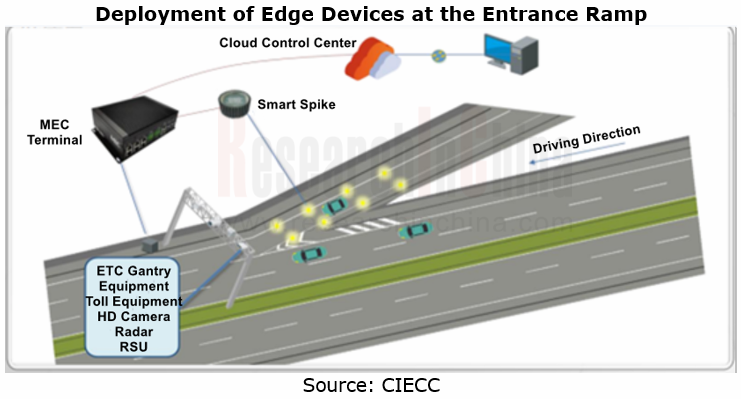
The tremendous derived value of the industry brings about competition for layout among companies.
The large-scale construction of intelligent roads is accompanied by increasing companies deploying edge computing. Players of chips, computing platforms, software, communication and cloud services among other fields are working to explore the roadside edge computing market. Among them, cloud service providers with their superiorities in cloud computing technology tend to apply the cloud computing technology to the edge side. For example, Chinese giants such as BAT (Baidu, Alibaba and Tencent) have begun to sink their computing capabilities into the edge side since 2018, racing to roll out their edge computing products.
In terms of product layout, the three major operators (China Mobile, China Telecom and China Telecom) have made comprehensive deployments in edge computing, cloud control platform, and communication technology to connect the edge computing-network communication-cloud control links; in addition to edge computing units, Internet companies like Huawei, Alibaba, and Tencent, as well as some conventional roadside equipment suppliers also deploy roadside perception units to build a complete roadside perception-computing system solution.
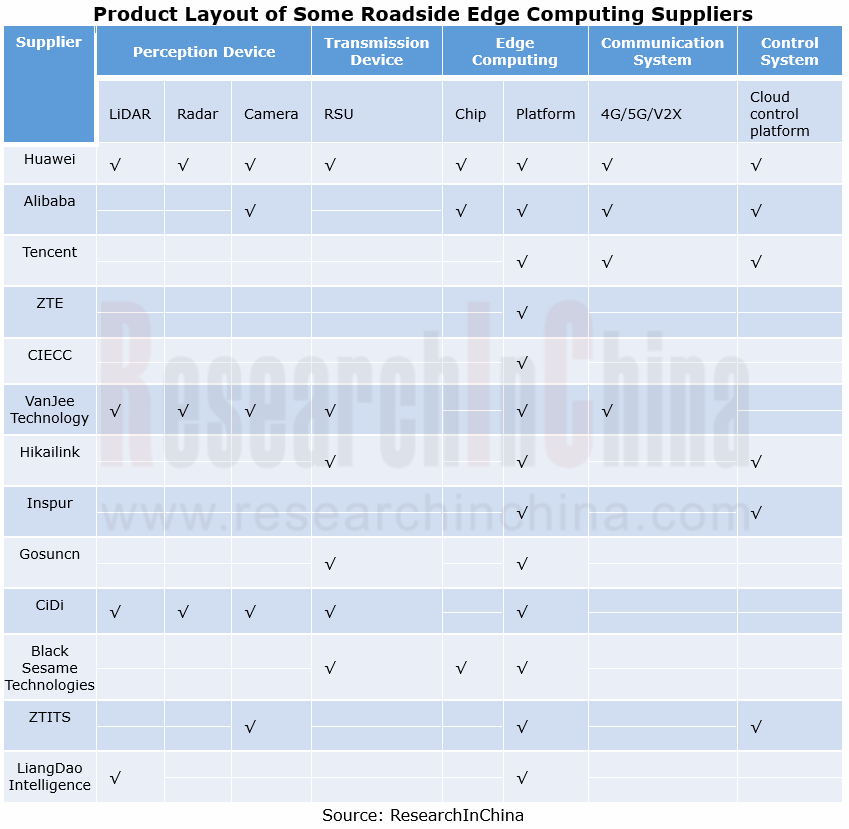
Huawei: the roadside perception units and ITS800 edge computing nodes used in the holographic intersection solution are all independently developed by Huawei.
At present, Huawei has built a complete intelligent road industry chain ecosystem, with R&D and production capabilities covering the whole chain from chip, edge computing and roadside perception to cloud platform. The Kunpeng + openEuler software-hardware cooperative edge computing platform uses Huawei's self-developed processor Kunpeng 920, TaiShan200 edge server (model: 2280E) and openEuler server operating system.
Huawei's edge computing unit features iteration and upgrade of algorithm cloud edge, real-time analysis and generation of structural data of road conditions, and access to V2X real-time service data.
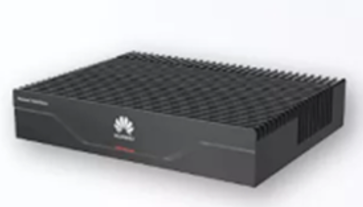
Alibaba Cloud: in 2021 it introduced a new "Cloud-Edge Integrated Small Station" where Neuro edge computing terminal, edge computing server, traffic big data all-in-one, and intelligent vehicle screen for vehicle-infrastructure cooperation help to reduce much of the cost of intelligent road projects and increase the return on investment. Among them, the Neuro edge computing terminal with small size boasts multiple capabilities and also supports cloud management.
Alibaba Cloud has deployed Neuro edge computing terminals on the Chengdu Second Ring Road Expressway and Chengdu-Yibin Expressway. The way to deploy a pole every 800 meters needs fewer devices arranged and saves the construction cost as much as possible.
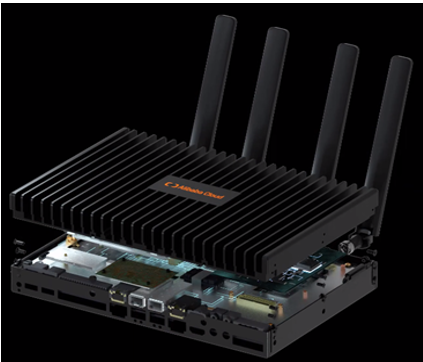
In addition, chip and computing platform providers have also launched roadside-related edge computing products.
Black Sesame Technologies: the company has unveiled FAD Edge, a roadside perception computing platform for vehicle-infrastructure cooperation scenarios. Based on Huashan No.2 A1000 autonomous driving chip (later to be upgraded to A1000 Pro), FAD Edge applies cloud computing to the edge side, and completes most of computing tasks at the edge computing nodes to meet the ultralow latency needs of vehicle-infrastructure cooperation; in addition, with 58 to 224TOPS computing power, FAD Edge supports multi-channel perception data access and multiple types of sensors; the built-in multi-channel perception device data fusion algorithms can be connected with the V2X system.
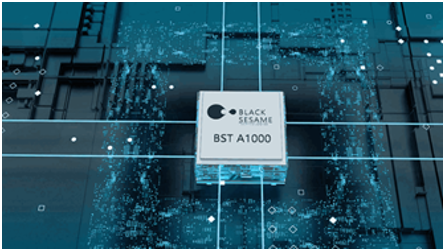
Unlimited AI: the company launched a super roadside fusion domain controller in 2021. As the world's first MEC and RSU integrated design, this product has strong real-time computing power, and is easy to deploy and maintain. With no need to occupy ground and municipal space separately, it reduces 75% engineering construction cost and 80% maintenance fees, remaining outstanding in mass adoption.
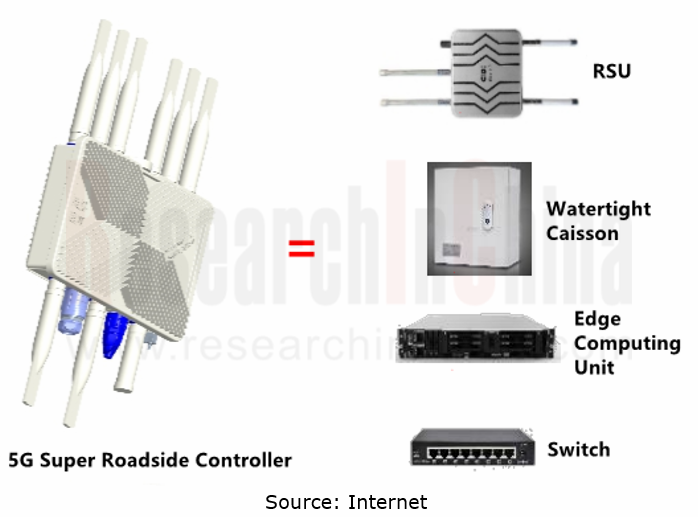
China Roadside Edge Computing Industry Report, 2022 highlights the following:
 Research on status quo of smart city and intelligent transportation industry, main intelligent transportation solutions, etc.;
Research on status quo of smart city and intelligent transportation industry, main intelligent transportation solutions, etc.;
 Research on edge computing (overview), computing modes, status quo of roadside edge computing standards, market size, status quo of industry chain, necessity of roadside application, etc.;
Research on edge computing (overview), computing modes, status quo of roadside edge computing standards, market size, status quo of industry chain, necessity of roadside application, etc.;
 Research on the connection of roadside edge computing with network communication, the connection with cloud control, etc.;
Research on the connection of roadside edge computing with network communication, the connection with cloud control, etc.;
 Research on the main application directions of roadside edge computing (including intelligent highway, smart intersection, smart park, and parking lot), etc.;
Research on the main application directions of roadside edge computing (including intelligent highway, smart intersection, smart park, and parking lot), etc.;
 Research on main roadside edge computing devices and solution providers (main roadside computing devices, overall roadside computing solutions and application, etc.).
Research on main roadside edge computing devices and solution providers (main roadside computing devices, overall roadside computing solutions and application, etc.).
Automotive Electronics OEM/ODM/EMS Industry Report, 2023
Automotive electronics OEM/ODM/EMS research: amid the disruption in the division of labor mode in the supply chain, which auto parts will be covered by OEM/ODM/EMS mode? Consumer electronic manu...
China Automotive Smart Glass Research Report, 2023
Smart glass research: the automotive smart dimming canopy market valued at RMB127 million in 2022 has a promising future.Smart dimming glass is a new type of special optoelectronic glass formed by com...
Automotive Ultrasonic Radar and OEM Parking Roadmap Development Research Report, 2023
Automotive Ultrasonic Radar Research: as a single vehicle is expected to carry 7 units in 2025, ultrasonic radars will evolve to the second generation.
As a single vehicle is expec...
Autonomous Driving SoC Research Report, 2023
Research on autonomous driving SoC: driving-parking integration boosts the industry, and computing in memory (CIM) and chiplet bring technological disruption.
“Autonomous Driving SoC Research ...
China ADAS Redundant System Strategy Research Report, 2023
Redundant System Research: The Last Line of Safety for Intelligent VehiclesRedundant design refers to a technology adding more than one set of functional channels, components or parts that enable the ...
Intelligent Steering Key Components Report, 2023
Research on intelligent steering key components: four development trends of intelligent steering
The automotive chassis consists of four major systems: transmission system, steering system, driving ...
Automotive Digital Instrument Cluster Operating System Report, 2023
Digital Instrument Cluster Operating System Report: QNX commanded 71% of the Chinese intelligent vehicle cluster operating system market.
Amid the trend for the integration of digital cluster and cen...
800V High Voltage Platform Research Report, 2023
How to realize the commercialization of 800V will play a crucial part in the strategy of OEMs.
As new energy vehicles and battery technology boom, charging and battery swapping in the new energy vehi...
Automotive Intelligent Cockpit Platform Research Report, 2023
Intelligent cockpit platform research: the boundaries between vehicles and PCs are blurring, and there are several feasible paths for cockpit platforms.
Automotive Intelligent Cockpit Platform Resea...
Global and China Automotive Wireless Communication Module Industry Report,2023
Vehicle communication module research: 5G R16+C-V2X module, smart SiP module and other new products spring up.
In 2022, 4G modules swept 84.3% of the vehicle communication module market....
Intelligent Vehicle Cockpit-Driving Integration Research Report, 2023
Cockpit-Driving Integration Research: many companies are making layout and may implement it during 2024-2025.
1. What is the real cockpit-driving integration?
At present, automotive electroni...
Chinese Joint Venture OEMs' Telematics System and Entertainment Ecosystem Research Report, 2022
Telematics System Research 2: Baidu Family Bucket, Huawei and Tencent Become the Mainstream Ecosystems
ResearchInChina released Chinese Joint Venture OEMs' Telematics System and Entertainment Ecosyst...
China Automotive Digital Key Research Report, 2023
Automotive Digital Key Research: the pace of mobile phones replacing physical keys quickens amid the booming market
"China Automotive Digital Key Research Report, 2023" released by ResearchInChina co...
Automotive Camera Tier2 Suppliers Research Report, 2022-2023
1. The automotive camera market maintains a pattern of "one superpower and several great powers".
Automotive cameras are used to focus the light reflected from the target onto the CIS after refractio...
Emerging Carmaker Strategy Research Report, 2023 - NIO
Emerging carmaker strategy research: NIO is deploying battery swap and sub-brands for the knockout match in 2023.In 2022, the sales surged by 32.3% year on year, being concentrated in first-tier citie...
Nissan CASE (Connectivity, Automation, Sharing and Electrification) Layout Research Report, 2022-2023
Nissan CASE research: two leverages for Dongfeng Nissan to turn the tables. Introduction: since 2020, the declining sales of Dongfeng Nissan have exposed its problems in brand influence and product co...
China Automotive Gesture Interaction Development Research Report,2022-2023
Vehicle gesture interaction research: in 2022, the installations rocketed by 315.6% year on year.China Automotive Gesture Interaction Development Research Report, 2022-2023 released by ResearchInChina...
Automotive Power Management Integrated Circuits (PMIC) Industry Report, 2023
Automotive PMIC research: the process of domestic automotive PMICs replacing foreign ones in China in the “crisis of chip shortage”.
Automotive power management integrated circuits (PMIC) find broad ...